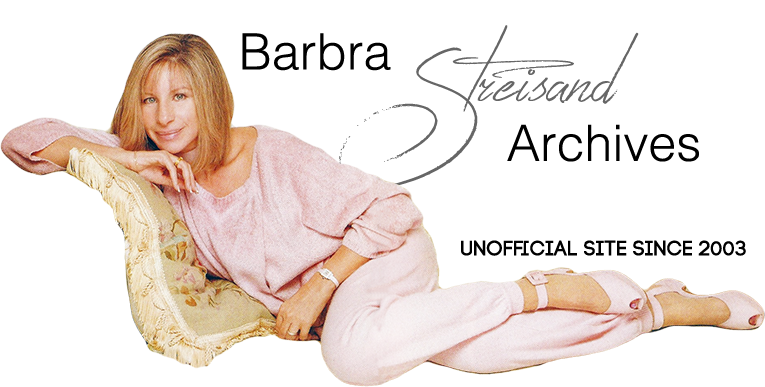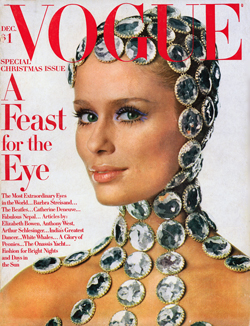
Vogue
December 1968
Barbra Streisand of Hello, Dolly!
A diabolist, she is touchingly comic and deceptively, irresistibly beautiful
Photos by David Bailey
Barbra Streisand knows the blush of success. After the release of her first movie, Funny Girl, she is savoring the pleasures of movie stardom. Now, relaxed, engagingly full of diablerie, bite, and confidence, she shows her fresh quality in a variety of moods and deliciousness in the photographs on these pages and the next two, all taken when she was on location for her next film, Hello, Dolly! With a small dog at her feet, she uses Dolly's romantic brimmed hat to shade her baby, Jason Gould.
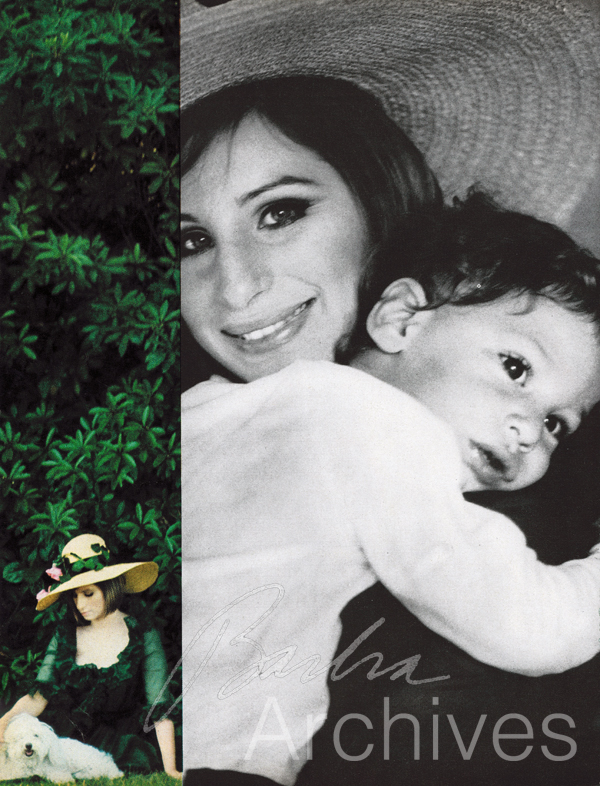
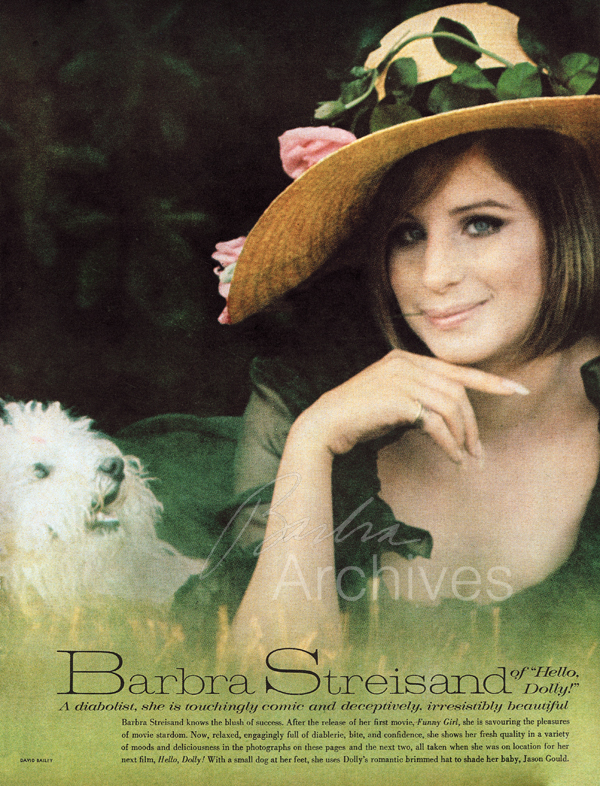
Barbra Streisand. With a double octave range, she moves in moods in her second movie, Hello, Dolly!

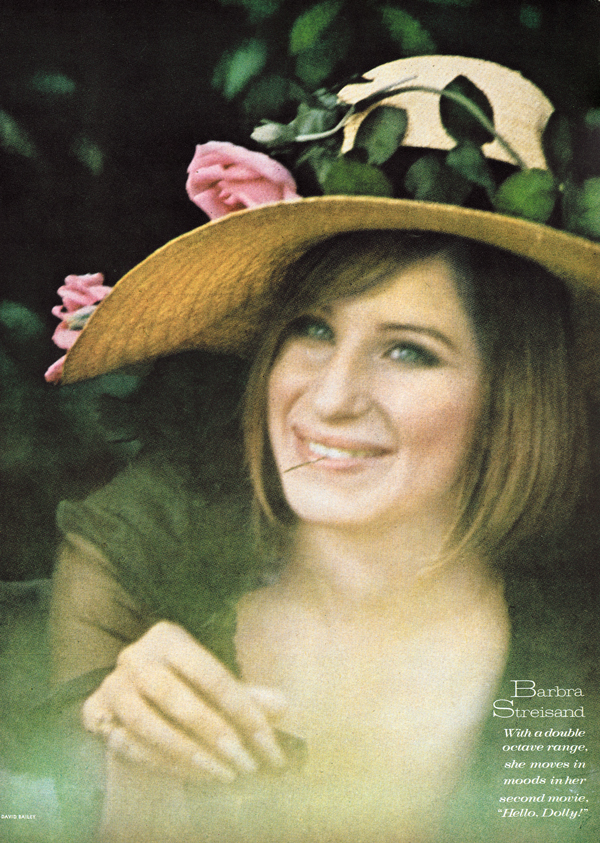
November 1968 U.K. Version
(with story & alternate photos)
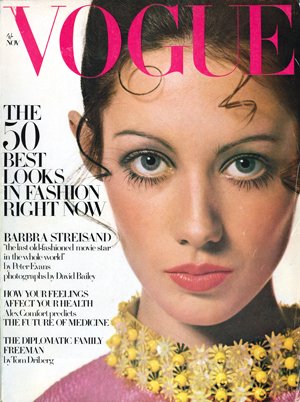
Barbra Streisand: “The Last Old-Fashioned Movie Star in the Whole Damned World”

By Peter Evans
Photographs by David Bailey

In the last light of the last hours of the last day in Hollywood before he was to fly to Paris for the Collections David Bailey finally got his pictures. He had been waiting for almost a week but each day there was another reason why it was simply not possible for him to photograph the star whom he had been invited some 8,000 miles to meet. Miss Barbra Streisand was busy, of course. And it wasn’t too difficult to figure the pressures. At that time 40 million dollars worth of movies were riding on her name — yet the public hadn’t seen her in a single frame. Funny Girl was in the can but who could say whether it was really in the bag? She was filming Hello, Dolly and co-starWalter Matthau was making small secret of his desire to say Goodbye, Barbra. And already on the horizon was On a Clear Day You Can See Forever. “It's quite simple,” said one film man close to the tension, “if her temperature goes up by one degree, our stock goes down six points”. Bailey’s bags were packed when the word came that Miss Streisand would be available at her home in Beverly Hills at 5 p.m. precisely. The Last Old-Fashioned Movie Star in the Whole Damned World was On. “Barbra,” said a studio aide, “relishes drama”. At 5 o’clock precisely, contrary to expectation, prediction and notoriously publicised form, she was ready. “If you don’t like this outfit,” she said, “I’ve got a couple more upstairs.” Bailey said he liked the way she was. “Fine,” she said. "Shall we dance?”
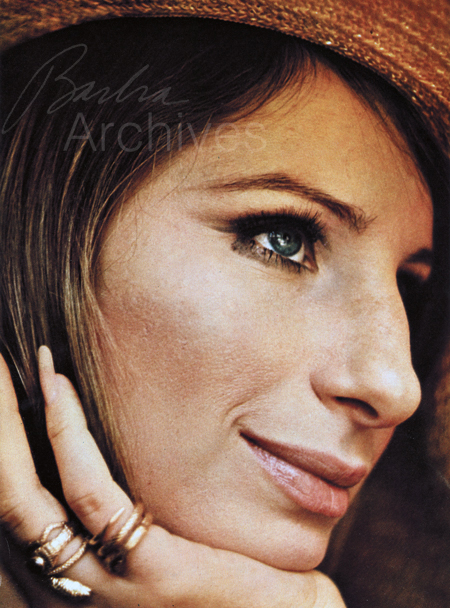
“I’ve never been nostalgic for my past. I always wanted more, more of. . . everything”
The session begins. They move around the morning-manicured lawns made for picnics and parasols, between the scattered toys of her son, Jason, down to the pool and back again, circling, working, talking in low voices below the trees, now smiling, sometimes serious, now a sudden laugh bred in Brooklyn ruffling the expensive silence of Beverly Hills, across the patio, into the house and out again, the aimless pattern of rapport concealing the professionalism. She is totally absorbed; her smile grows gentle and perhaps, you feel for the first time, it is permanently a little sad, too.

Click.
“Super,” says Bailey, over a flurry of more caressing clicks.
You think about the various descriptions you have read of that face—a Russian wolf-hound, furious hamster, amiable anteater, myopic gazelle—and wonder, irritably, why. It is none of these things.
“That’s beautiful, Barbra,” Bailey is saying. “That’s so . . . you actually sing as well?”
She laughs, and the strain goes from her sorrel eyes. The mouth is provocative and mocking and yet somehow too vulnerable, perhaps because not all childhood has left her face. And, at twenty-five, the hurt of that childhood is still too close to Barbra Streisand.
Her memories of Brooklyn are not happy. Her father died when she was fifteen months old. She was fourteen when she visited the theatre for the first time and knew she had to be an actress.
“I could never accept that life was what it was. Even when was very young I was always trying to make it something else. I think that’s why anyone becomes an actor—to get to live in the fantasy land, to get to touch the tinsel, you know ?”
Now, high on Summit Drive, she is there. Only the landscape of her fantasy world is all wrong. Even the tinsel is barbed.
Click.
Bailey finished the session just before the last good light. He caught his plane to Paris.
“Do you think he was happy?” she asked.
It is not unreasonable, when you think about it, that when so many see her on the gilt-edge of stardom, Barbra Streisand can feel only a precipice beneath her feet.
“When I first came here to sing at the Coconut Grove a couple of years ago everybody had heard about me and I could feel the excitement. I was kinda keyed up, you know, and famous stars and celebrities arrived every night to watch me work. I guess I was really happy then. Funny, isn’t it? Because when I came back with three movie offers and everything I could feel the hatred as I got off the plane. It was like a whole other thing. I could feel my unwelcomeness.”
She is, according to one close friend, driven by pessimism and a persecution mania; a condition unhelped by Mr. Matthau’s public proclamation on the set of Hello, Dolly that “nobody in this company likes you.”
Yet she is not without an admirably cynical sense of humour about her place at the top of the shifting Hollywood heap. “I know,” she says, easily, “a lot of people are sitting around for me to have a big fat failure. But even so, I like to look on the bright side. If I have a failure—I gotta have a comeback, right? And that makes me more interesting.
“At the moment I’m a sort of Cinderella story. That’s boring after a while. People don’t want the slipper to fit all the time.”
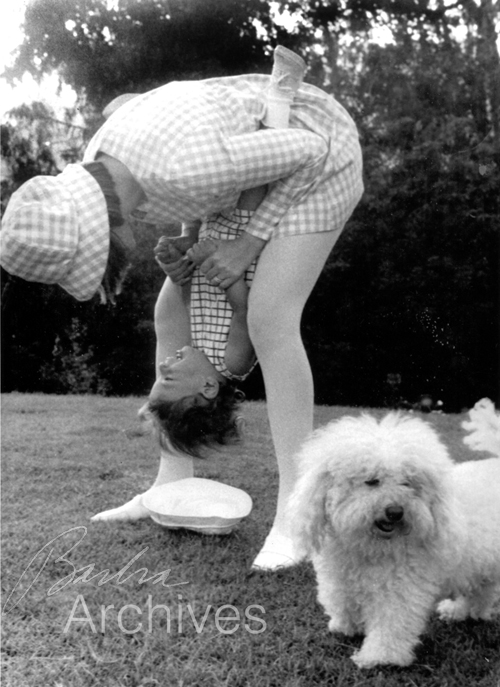 Socially, it’s been a tight fit for some time. Certainly, she did not get off to an auspicious start in Hollywood’s high society. She was ninety minutes late for the party producer Ray Stark gave for her and compounded the faux pas by avoiding the Big Names gathered to greet her.
Socially, it’s been a tight fit for some time. Certainly, she did not get off to an auspicious start in Hollywood’s high society. She was ninety minutes late for the party producer Ray Stark gave for her and compounded the faux pas by avoiding the Big Names gathered to greet her.
“From that moment on,” says her manager, Marty Erlichman, “the whole Establishment went against her. But nobody took time out to discover the reason for her behaviour. She was late because she changed her clothes thirty times; and she had an upset stomach. That’s how nervous she was.”
She was later to tell a friend, “I was practically paralysed by a quiet panic. There was John Wayne and I didn’t know what to say to John Wayne.” You’re not supposed to feel like that, of course. You’re supposed to play the Game. “Hi, Duke, saw your last movie, it was great, just great. Hello Gregory. And Marlon, how lovely to see you. And Frank and . . . everybody.”
Says Erlichman, “She couldn’t do it. She is too totally honest and too candid for the world we live in and the business she is in . . . I tell her, Barbra, make your interview like another scene. Have your Big Interview Scene. I’ll give you all the right words and attitudes and you can rehearse it like another part. But she can’t fake. It was a total disaster from that moment on—it was her first week here—and they haven’t let up yet.”
But wasn’t that part of the dream?
“I wanted to be Scarlett O’Hara and not Vivien Leigh. The dream had nothing to do with acquiring fans and people who would adore me. That part of the business is so phoney and unreal.” She speaks with passion and a kind of puzzlement, too. There is about her the classic confusion of all sudden success.
“I don’t even know what Barbra Streisand is or is supposed to be,” she tells you. “I walk down the street and I go to the movies and nobody really recognizes me. I certainly don’t feel like a star. Maybe I’m sick or something.”
“I don’t really believe she can be that shy and naive,” says one guest at that ill-starred soirée in Bel Air. “Goodness, she’s just about the biggest star we’ve got or had in years. Even Garbo wasn t that nervous.”
Part of the enigma is that Barbra Streisand can be uncompromising, nail-hard and outspoken about her work. (“She’s about as shy as Bonnie Parker holding up banks,” says one film man.) If she disagreed with John Wayne on the set, one suspects, she would know exactly what to say to him. She regards the censorious wrath of Hollywood with an amalgam of puzzlement and pity. “In the movie business,” she says, “you can’t have an opinion. It’s such a strange thing. They operate on such a false premise. Like everybody is supposed to stay in their own category. You-Can’t-Have-An- Opinion-About-That-Because-You’re-Just-That. Well, I can’t departmentalize my life. I’m a complete human being. I work in a total way. That means I’m motivated by the heat of the sun and the fabric I’m wearing and the food I eat and the people I meet. And I have opinions about all these things because they all affect my performance. I’m not a machine that spouts lines and songs and that’s it.”
Barbra Streisand may not be the most comfortable woman to have around, honest people seldom are that. “There’s a great line in Joan of Arc,” she says, “I can’t even remember where she says it . . . oh, yeah, something about she who tells the truth shall surely be caught. It’s absolutely true. There is no place for the truth today.”
She possesses a brand of bravura self-assurance that only her humour saves from being aggressive. But behind the intimidating barricades is something infinitely more feminine and fragile and unmistakably lonely. For loneliness, she is discovering, is the price of preeminence in any field. She is always looking for the nearest exit.
If she is occasionally difficult—well, that’s the name of the game. “As far as being a trouble-maker,” says producer Lehman, “she hasn’t learned even half the trouble she can make. I thought she was going to be an aggressive grasping female. But she is a fantastically real, unphoney, unsuperstarish young lady who just hasn’t caught up with who she is.”
Her sense of insecurity is unsuspectingly close behind her sense of achievement. Yet this volatile, talented, tormented woman, presently straddling Hollywood’s social register black list, is also the one actress who could very well restore the town’s failing faith in its old stylish magic. It is perhaps too easy now to forget that because she came into town on a fast escalator ride she was well acquainted with the slow treadmill of apprenticeship. When she talks it is not without a fine measure of professional validity; she knows the score exactly.

Not long ago at a recording session on Hello, Dolly Lehman told her: “To hell with all this about being polite, Barbra. You don’t sing the melody on that final word in the second chorus.”
“Do you realise, Mr Lehman,” she told him, in her most chilling voice, “how much people pay me not to sing the melody?”
One evening she talked about “getting out of the performing end of the business.” It is unlikely that she will. But her disenchantment is intense. “Part of our society,” she says, “kills what it loves, despises what it’s created. It really hates success. It’s for the underdog . . . you’ve got to be destroyed, buried, pushed right back down again. It’s terribly sick and I really would rather not be part of it.” She wanted, she said, to produce more and “do something creative and unmolested and good.”
The photographer had left for Paris and the light was fading and somewhere in the house the Scottish nanny was bathing Jason. Barbra Streisand asked a girl friend whether she would go to the movies with her that night. The girl wasn’t free.
“Look at me. I’m supposed to be a big movie star, right? And I can’t get anybody to come to the movies with me.”
End.
[ top of page ]
Alternate photos from the sitting with David Bailey...
The photos below did not appear in either the U.K. or U.S. issues of Vogue, but were published elsewhere...

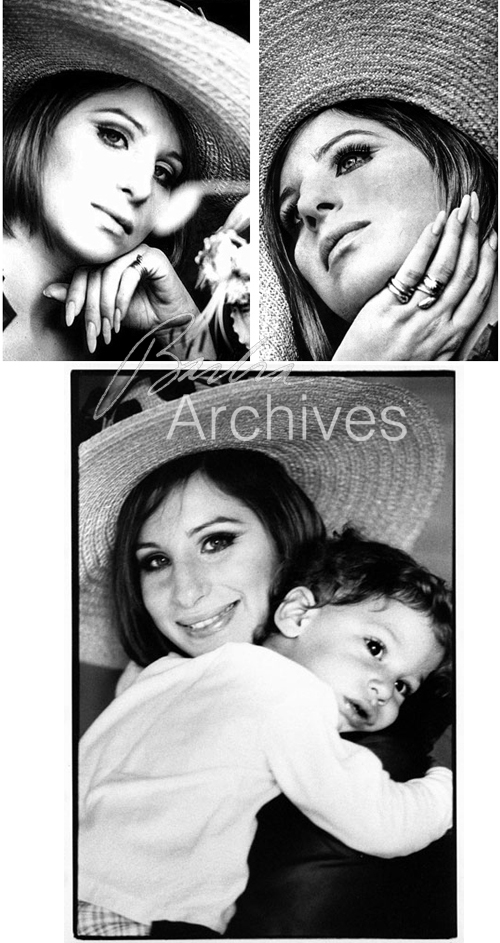
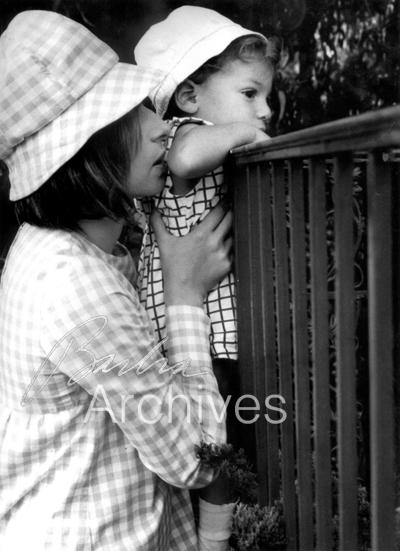 One of the outtakes from this session with Barbra Streisand was used as the back cover photo on her 1974 album, The Way We Were:
One of the outtakes from this session with Barbra Streisand was used as the back cover photo on her 1974 album, The Way We Were:
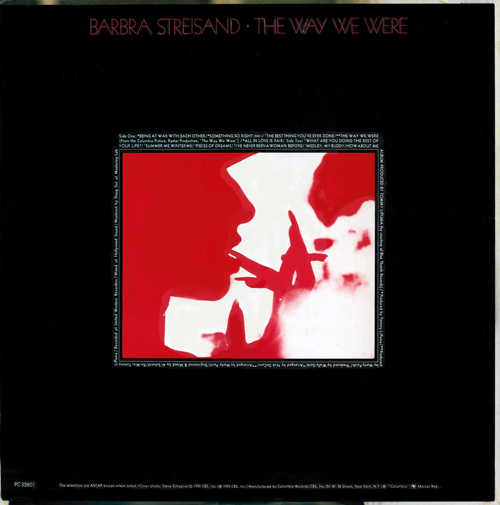
And, below, even some more outtakes by Bailey, courtesy of Streisand fan Robert Anen ...
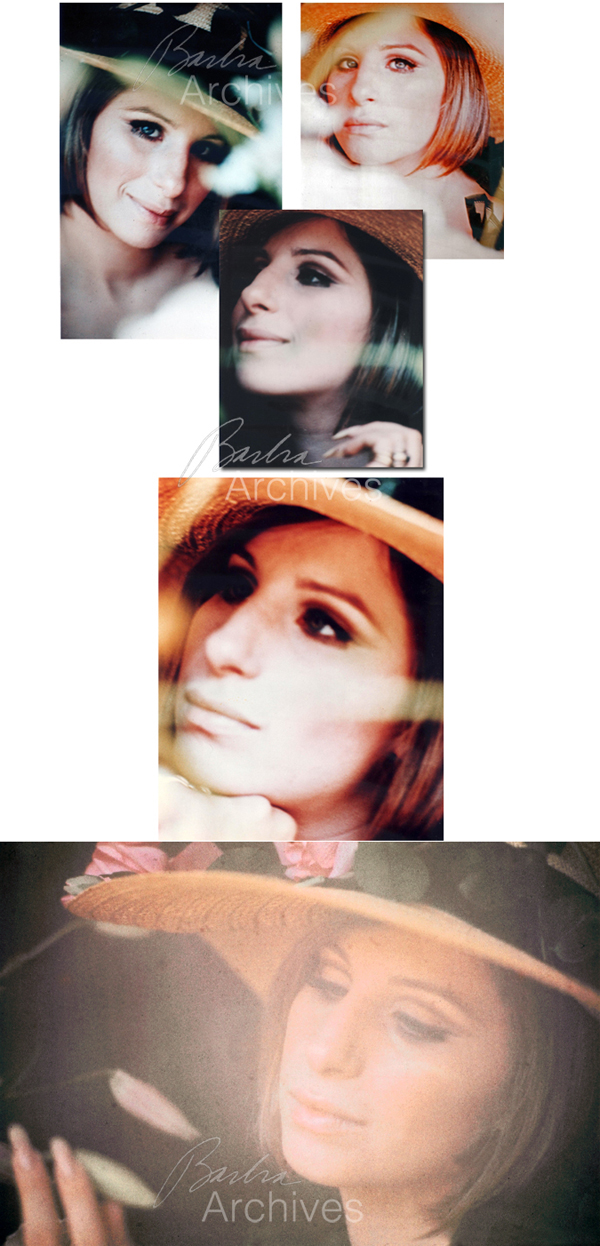
END.
[ top of page ]
